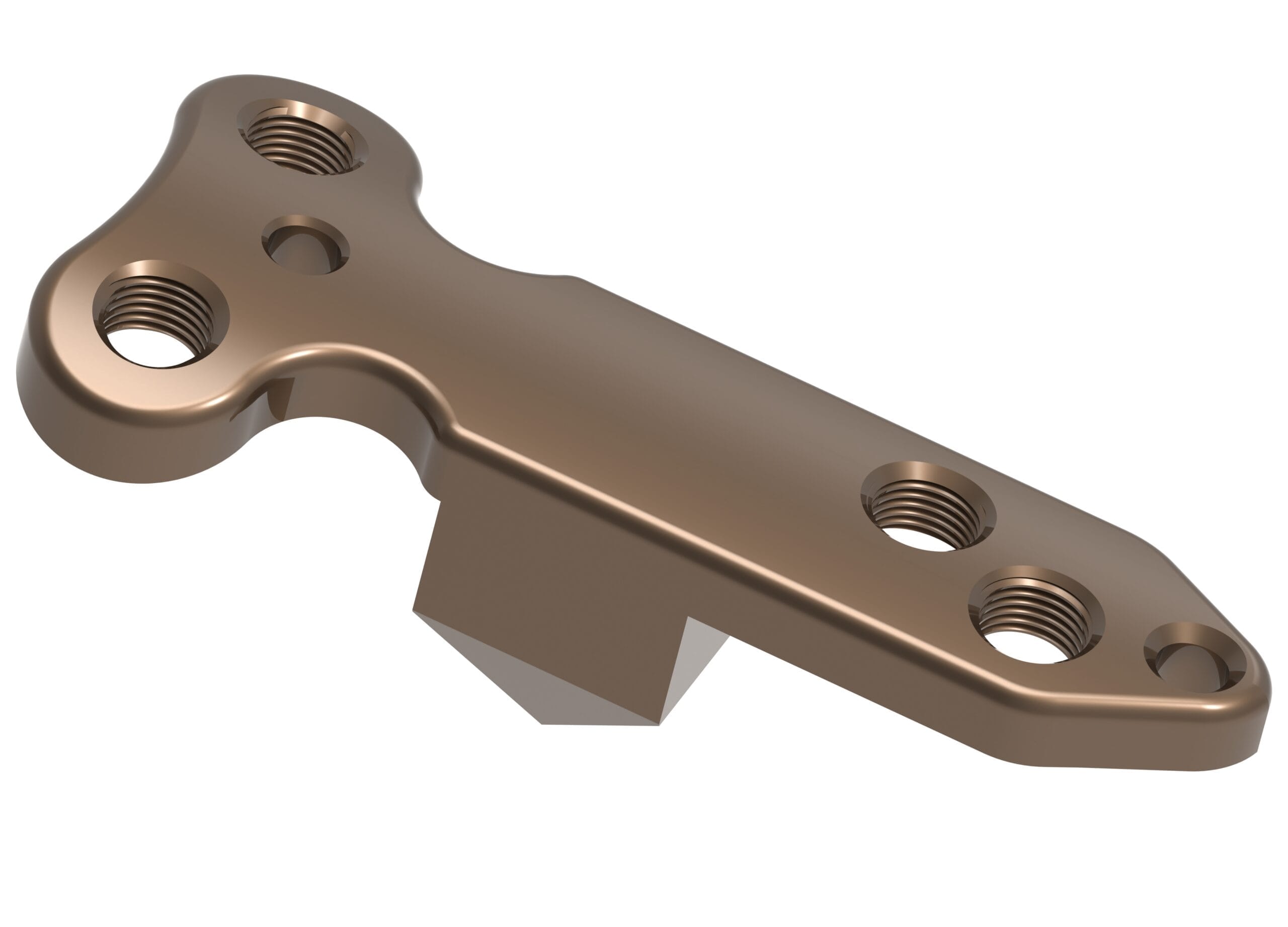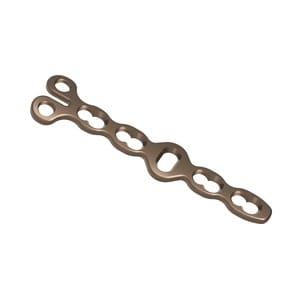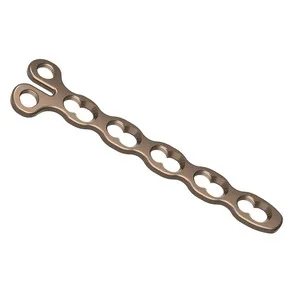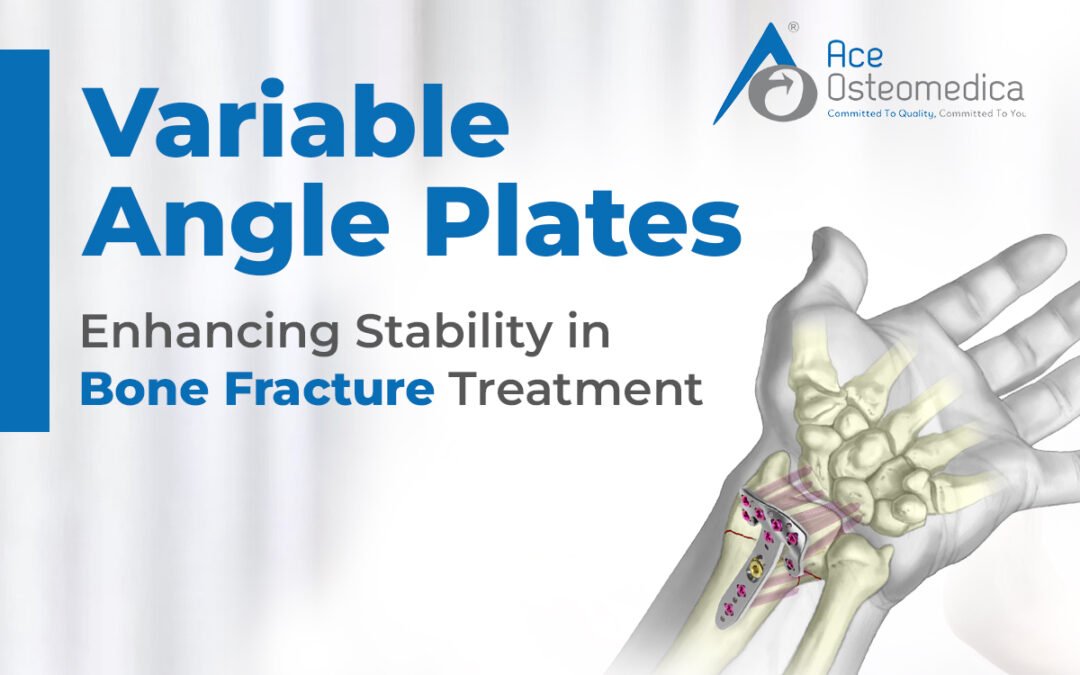Bone fractures are the most common and complex medical condition that requires precise bone fracture treatment in order to ensure effective healing. Among one of the numerous innovations, Variable Angle Plates (VAPs) have become an innovative tool that gives surgeons more flexibility and better stability. VAPs are advanced orthopedic implant manufacturers designed for stable fixation of bone fractures, especially in complex and osteoporotic cases. Unlike traditional locking plates that restrict screw placement to fixed trajectories, VAPs allow multidirectional screw angulation, typically within a ±15° cone, improving adaptability to patient anatomy.
Ace Osteomedica, a leading Manufacturers of variable angle plates, has been at the epicenter of creating innovative Variable Angle Plates to enhance surgical effectiveness and patient satisfaction.

Understanding Variable Angle Plates in Bone Fracture Treatment
Variable Angle Plates provide angular flexibility in screw placement, allowing surgeons to optimize screw direction based on bone quality and fracture pattern, which in turn enhances implant stability and patient recovery. It gives flexibility in adjusting to the anatomical structures by enabling multi-directional screw placement, in contrast to traditional locking plates that have predetermined screw trajectories.

In bone fracture treatment, the function of Manufacturers of variable angle plates is to provide firm fixation while taking into account the differences between the geometry and quality of the bone. By allowing angulated screw insertion, these plates increase stability and the chances of implant failure lessen, reducing stress concentrations and encouraging even load distribution throughout the fracture site.
Benefits of Variable Angle Plates over Traditional Systems in Bone Fracture Treatment

These Plates are better than traditional fixed-angle plating methods when treating bone fractures as it has numerous benefits. These advantages include:
- Enhanced Fixation Stability –
- Variable angle locking improves screw anchorage in poor bone stock (e.g., osteoporotic bones)
- Better distribution of mechanical loads reduces the risk of implant failure.
- Improved Surgical Flexibility –
- Surgeons can adjust screw trajectory intraoperatively to avoid anatomical hazards and optimize fixation, especially near joints or in comminuted fractures.
- Minimized Soft Tissue Irritation –
- Custom screw placement avoids soft tissue impingement and reduces post-op complications.
- Biomechanical Advantage –
- Controlled micromotion at the fracture site may enhance secondary bone healing, depending on fracture pattern and plate rigidity.
- Versatility –
- Ideal for periarticular, metaphyseal, and osteoporotic fractures across multiple anatomical sites, such as the distal radius, proximal humerus, tibial plateau, and acetabulum.
Ace Osteomedica’s Innovation in Variable Angle Plate Technology in Bone Fracture Treatment

By consistently creating high-performing solutions for Bone fracture treatments, Ace Osteomedica has become the leading Manufacturers of bone screws. The Manufacturers of variable angle plates combine fine manufacturing, ergonomic design, and cutting-edge material science, resulting in maximized patient results. Ace Osteomedica’s Manufacturers of variable angle plates have numerous important characteristics, such as:
- Materials –
- As a leading Manufacturers of variable angle plates, Ace Osteomedica uses high-grade titanium alloys (Ti6A14V) ensuring biocompatibility, corrosion resistance, and mechanical strength.
- Screw Locking Mechanism –
- True variable-angle locking systems use threaded conical screw heads that lock into specially designed combi-holes or VA holes, offering both angle stability and optional dynamic compression.
- Surface Treatment –
- Surface treatments like anodizing (for titanium) or passivation (for stainless steel) improve corrosion resistance.
- MIS-Compatible Design –
- Low-profile, pre-contoured plates with slotted holes for percutaneous insertion and reduced soft tissue disruption.
Clinical Applications of Variable Angle Plates in Bone Fracture Treatment
The use of these plates in bone fracture treatment has been used widely across various orthopedic procedures. These implants are known to be exceptionally effective in treating complicated fractures, such as:

- Proximal Humerus Fractures – These plates provide better fixation in osteoporotic bones which ensures better functional outcomes.
- Distal Radius Fractures – In order to achieve optimal alignment and stability, surgeons benefit from the flexibility of screw placements.
- Tibial Plateau Fractures – These plates make it simpler to facilitate precise screw angulation, which is crucial for reconstructing the articular surface.
- Pelvic and Acetabular Fractures – The risk of implant failure reduces as VAPs allow for safe and secure fixation in complicated pelvic anatomy.
Read More – How Orthopedic Implant Manufacturer Can Improve Implant Durability
Conclusion
By offering greater stability, surgical flexibility, and improved biochemical performance, VAPs have revolutionized bone fracture treatment. Ace Osteomedica, the leading Manufacturers of variable angle plates has lived up to the commitment they have made in creating premium and adaptable plates that cater to the developing demands of orthopedic surgeons and patients. To enhance patient outcomes and influence the direction of bone fracture treatment, VAPs technology will continue to remain integral.
Q1. What are angle plates in orthopedics?
Ans – Angle plates are orthopedic implants used to stabilize bone fractures by maintaining fixed angular relationships between the plate and screws. Variable angle plates (VAPs) allow the surgeon to change the screw insertion angle within a controlled range (typically ±15°), enhancing fixation in anatomically challenging areas.
Q2. What kind of plates are used in orthopedic surgery?
Ans – Orthopedic bone plates are used for bone fracture treatment. These include:
- Dynamic Compression Plates (DCP)
- Locking Compression Plates (LCP)
- Variable Angle Plates (VAP)
- Periarticular Plates
- Reconstruction Plates
- Tubular and Cloverleaf Plates
Each is selected based on the fracture location, pattern, and bone quality.
Q3. What does VA-LCP plate stand for?
Ans – It stands for Variable Angle Locking Compression Plate. A plate combining the benefits of locking screw fixation with the ability to insert screws at variable angles, enhancing surgical flexibility and bone contact.
Q4. Are bone plates permanent?
Ans – Bone plates can be permanent or temporary. If they don’t cause irritation or complications, they may remain in the body. However, they can be removed after 12–18 months once the bone has fully healed, especially in younger or more active patients.
Q5. What is a fixed-angle device?
Ans – A fixed-angle device refers to an implant where the screw head locks into the plate at a predetermined angle, forming a rigid construct. This reduces micro-motion at the screw-plate interface, enhancing stability—especially important in osteoporotic or comminuted fractures.
Q6. Which plate is best for bone fracture treatment?
Ans – The best plate depends on fracture type, location, and patient bone quality. However, Variable Angle Plates are often preferred for:
- Complex fractures
- Osteoporotic bone
- Periarticular regions
They offer adjustable screw trajectories and strong fixation, improving surgical outcomes.

